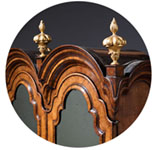A George III Giltwood Mirror in the Manner of Thomas Johnson
circa 1760
Sold
Request Information
Follow Us
A George III Giltwood Mirror in the Manner of Thomas Johnson
An early George III carved giltwood mirror in the manner of Thomas Johnson, circa 1760.
The period mercury mirror plate within a moulded fluted frame is flanked by cascading native flora. The carved upper C-scroll corners are pierced and surmounted by a further scroll which seamlessly flows into the pediment of C-scrolls and flora centred by a rose. Similarly, the lower of the mirror is edged with large scrolls of dripping acanthus leaves and C-scrolls all flowing to central cartouche.
It should be noted that this example is in the most wonderful condition and dates from one of the most celebrated periods in English furniture history ‘ The Chippendale Period’.
Additional reading and Literature: H. Hayward, Thomas Johnson and the English Rococo, London, 1964; Peter Ward-Jackson, English Furniture Designs of the Eighteenth Century, London, Victoria and Albert Museum, 1984.
Mirrors of a similar form can be found at Sizergh Castle, Cumbria, North, Blickling Hall, Norfolk and Nostell Priory, West Yorkshire.
Thomas Johnson (1714-1778) was a notable British carver, designer and gilder who was born in London. He fully embraced the capriciousness of the rococo style. He was a pupil of Matthias Lock who embodied the harmonious combination of naturalistic motifs and had a tendency towards asymmetry.
Thomas Johnson concentrated his efforts on designs of wall lights, girandoles and console tables which allowed him to play with form and motifs. His designs were more elaborate than his contemporaries, and they were intended to promote his inventiveness rather than for more practical purposes. He first published his designs in the publication of Twelve Girandoles in 1755. His target audiences were cabinetmakers and upholsterers rather than the end-user. This publication was followed by a series of 53 designs published between 1756-1757. Three years later he published A New Book of Ornaments from which only one plate survives though others are known from 19th-century reproductions. One year later the prolific designer produced, One Hundred and Fifty New Designs.
The flora is most likely to be the flowers, leaves and fruit of the fig tree. Figs were imported from France, Spain and Italy to England in the 18th century and were planted on the south walls of stately houses whose aristocratic owners appeared to be the only ones to appreciate them… the lower classes having little regard for figs and often derided them, as in the common saying ‘not worth a fig’. Interestingly, ‘Brunswick’, ‘Brown Turkey’ and ‘White Marseilles’ are still the most commonly grown figs in Britain.
Condition
Provenance
Private London collection
Literature
Dimensions
PREVIOUSLY SOLD
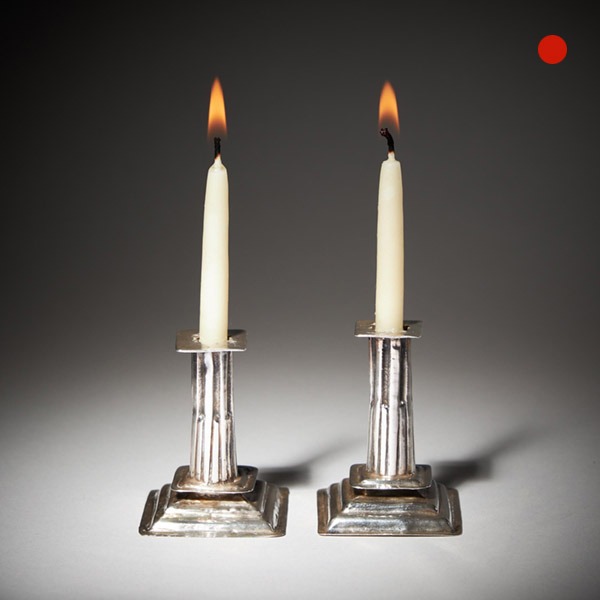
A Pair of 17th Century William and Mary Miniature Candlesticks By George Manjoy
A Pair of 17th Century William and Mary Miniature Candlesticks By George Manjoy SoldFollow UsA...
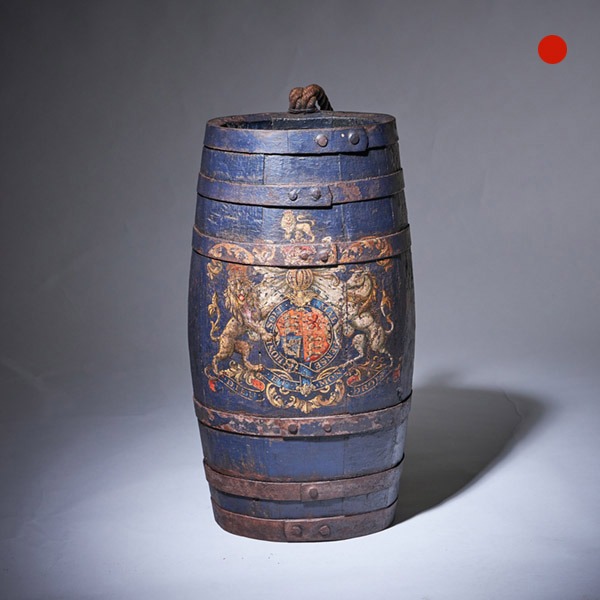
Rare Royal 18th Century Powder Barrel Stick Stand Decorated with a Coat of Arms
Rare Royal 18th Century Powder Barrel Stick Stand Decorated with a Coat of Arms SoldFollow UsRare...

An Extremely Rare Geometric George II Parquetry Cocuswood Tea Caddy, Circa 1730
An Extremely Rare Geometric George II Parquetry Cocuswood Tea Caddy, Circa 1730 SoldFollow UsAn...
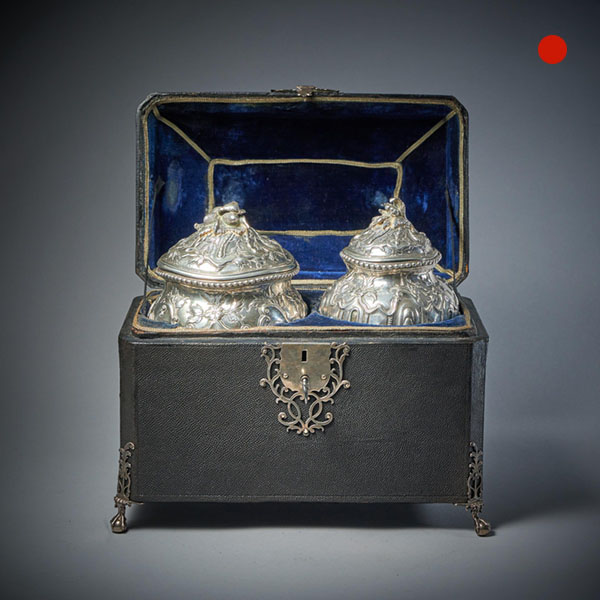
A Rare Silver Mounted George II Shagreen Tea Caddy with Silver Rocco Canistors
A Rare Silver Mounted George II Shagreen Tea Caddy with Silver Rocco Canistors Sold[wpforms_selector form_id="11387" show_title="on" _builder_version="4.22.1" _module_preset="default" custom_margin="-30px||||false|false"...

George III Silver-Gilt Pepper Pot with the Royal Cypher of Queen Charlotte, 1798
George III Silver-Gilt Pepper Pot with the Royal Cypher of Queen Charlotte, 1798 SoldFollow UsGeorge III Silver-Gilt Pepper Pot with the Royal Cypher of Queen Charlotte, 1798 Royal Interest A George III silver-gilt pepper pot by John Emes,...
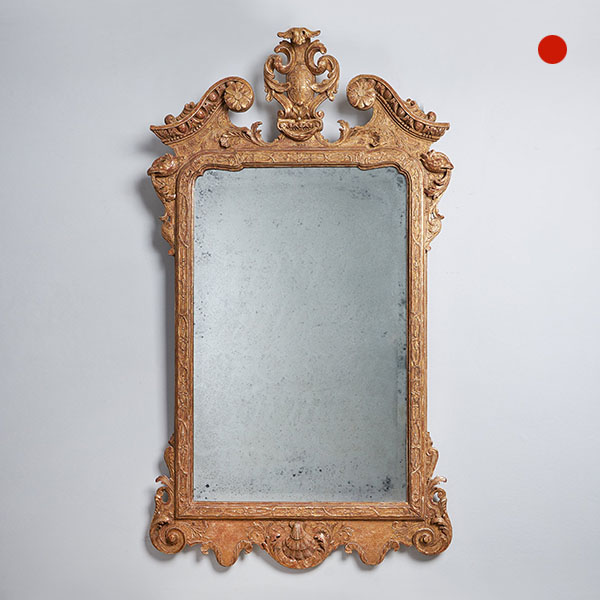
An Important 18th Century George I Gilt Gesso Mirror, C 1725
An Important 18th Century George I Gilt Gesso Mirror, C 1725 SoldFollow UsAn Important 18th Century George I Gilt Gesso Mirror, C 1725 An important early 18th century George I Gilt Gesso mirror, circa 1720-1730. England In the manner of John...

A Pair of 17th Century William and Mary Miniature Candlesticks By George Manjoy
A Pair of 17th Century William and Mary Miniature Candlesticks By George Manjoy SoldFollow UsA...

Rare Royal 18th Century Powder Barrel Stick Stand Decorated with a Coat of Arms
Rare Royal 18th Century Powder Barrel Stick Stand Decorated with a Coat of Arms SoldFollow UsRare...

An Extremely Rare Geometric George II Parquetry Cocuswood Tea Caddy, Circa 1730
An Extremely Rare Geometric George II Parquetry Cocuswood Tea Caddy, Circa 1730 SoldFollow UsAn...

A Rare Silver Mounted George II Shagreen Tea Caddy with Silver Rocco Canistors
A Rare Silver Mounted George II Shagreen Tea Caddy with Silver Rocco Canistors Sold[wpforms_selector form_id="11387" show_title="on" _builder_version="4.22.1" _module_preset="default" custom_margin="-30px||||false|false"...

George III Silver-Gilt Pepper Pot with the Royal Cypher of Queen Charlotte, 1798
George III Silver-Gilt Pepper Pot with the Royal Cypher of Queen Charlotte, 1798 SoldFollow UsGeorge III Silver-Gilt Pepper Pot with the Royal Cypher of Queen Charlotte, 1798 Royal Interest A George III silver-gilt pepper pot by John Emes,...

An Important 18th Century George I Gilt Gesso Mirror, C 1725
An Important 18th Century George I Gilt Gesso Mirror, C 1725 SoldFollow UsAn Important 18th Century George I Gilt Gesso Mirror, C 1725 An important early 18th century George I Gilt Gesso mirror, circa 1720-1730. England In the manner of John...
YOU MAY ALSO LIKE
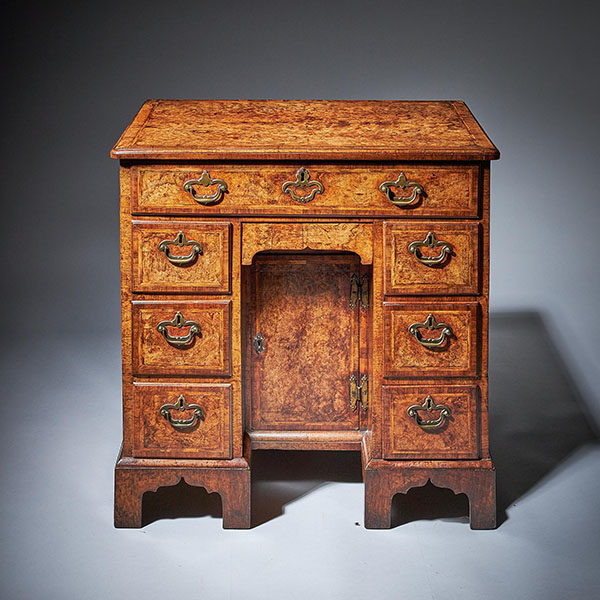
Rare Burr Walnut George II 18th Century Kneehole Desk, circa 1730-1740. England
Rare Burr Walnut George II 18th Century Kneehole Desk, circa 1730-1740. England £28,900Follow UsRare Burr Walnut George II 18th Century Kneehole Desk, circa 1730-1740. England Rare Burr Walnut George II 18th Century Kneehole Desk / Bachelor's...

A Fine 17th Century William and Mary Kingwood Strongbox or Coffre Fort, Circa 1690
A Fine 17th Century William and Mary Kingwood Strongbox or Coffre Fort, Circa 1690 £10,900Follow...
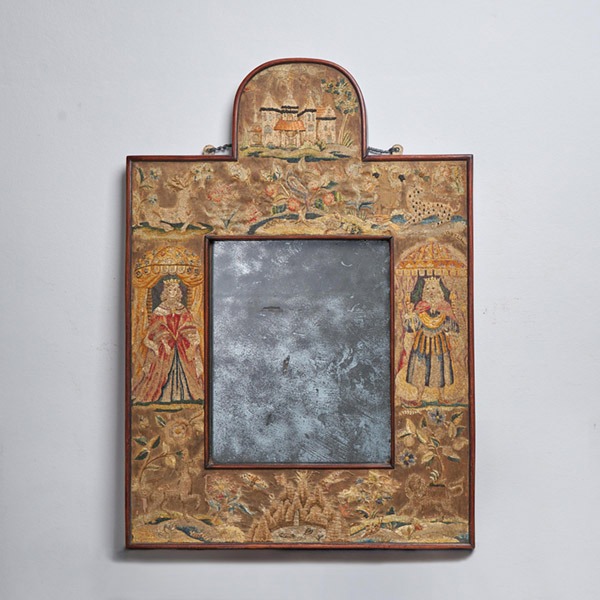
Important 17th Century Charles II Silk Needlework – Stumpwork Mirror
Important 17th Century Charles II Silk Needlework - Stumpwork Mirror £12,500Follow UsImportant...
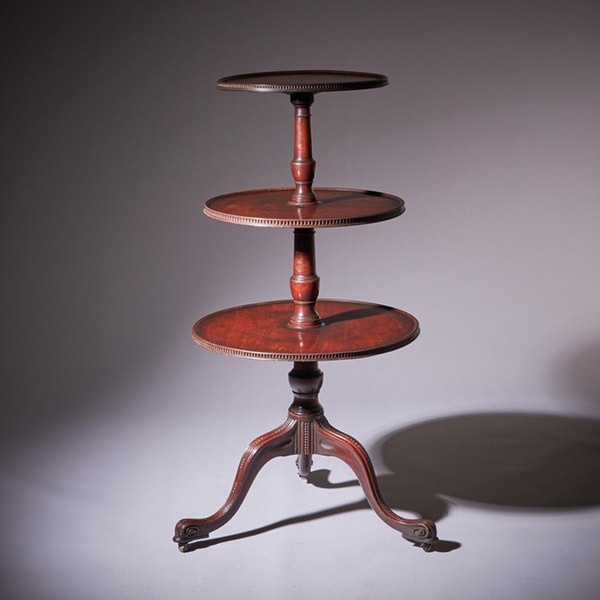
A Fine George III Chippendale Mahogany Dumb Waiter, Circa 1760 England
A Fine George III Chippendale Mahogany Dumb Waiter, Circa 1760 England. £5,600Follow UsA Fine...
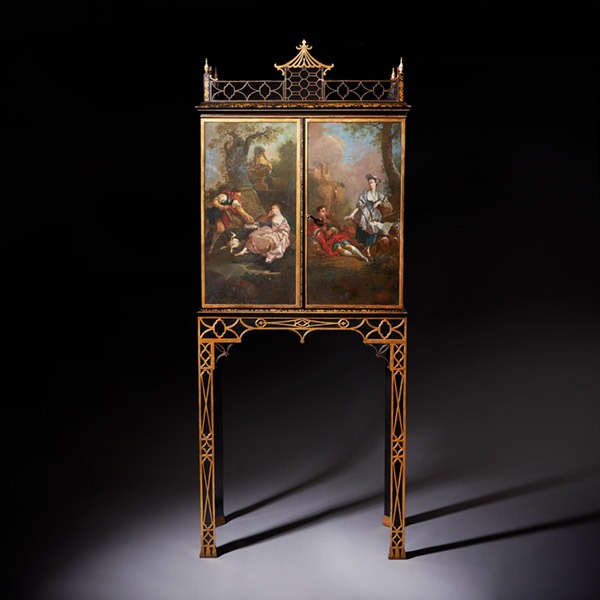
A Rare Chinese Chippendale George III cabinet on stand, circa 1760 England
A Rare Chinese Chippendale George III cabinet on stand, circa 1760. England £38,000Follow UsA Rare...
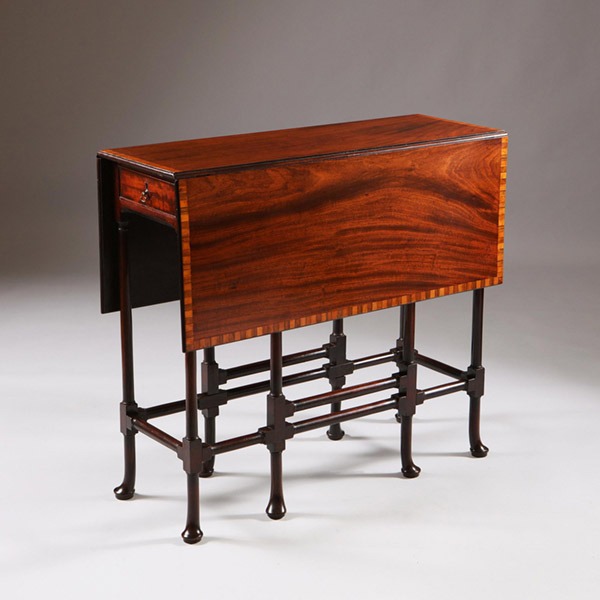
George III mahogany spider-leg table attributed to Thomas Chippendale 1768
A George III mahogany spider-leg table attributed to Thomas Chippendale 1768 £12,000Follow UsA...

Rare Burr Walnut George II 18th Century Kneehole Desk, circa 1730-1740. England
Rare Burr Walnut George II 18th Century Kneehole Desk, circa 1730-1740. England £28,900Follow UsRare Burr Walnut George II 18th Century Kneehole Desk, circa 1730-1740. England Rare Burr Walnut George II 18th Century Kneehole Desk / Bachelor's...

A Fine 17th Century William and Mary Kingwood Strongbox or Coffre Fort, Circa 1690
A Fine 17th Century William and Mary Kingwood Strongbox or Coffre Fort, Circa 1690 £10,900Follow...

Important 17th Century Charles II Silk Needlework – Stumpwork Mirror
Important 17th Century Charles II Silk Needlework - Stumpwork Mirror £12,500Follow UsImportant...

A Fine George III Chippendale Mahogany Dumb Waiter, Circa 1760 England
A Fine George III Chippendale Mahogany Dumb Waiter, Circa 1760 England. £5,600Follow UsA Fine...

A Rare Chinese Chippendale George III cabinet on stand, circa 1760 England
A Rare Chinese Chippendale George III cabinet on stand, circa 1760. England £38,000Follow UsA Rare...

George III mahogany spider-leg table attributed to Thomas Chippendale 1768
A George III mahogany spider-leg table attributed to Thomas Chippendale 1768 £12,000Follow UsA...
